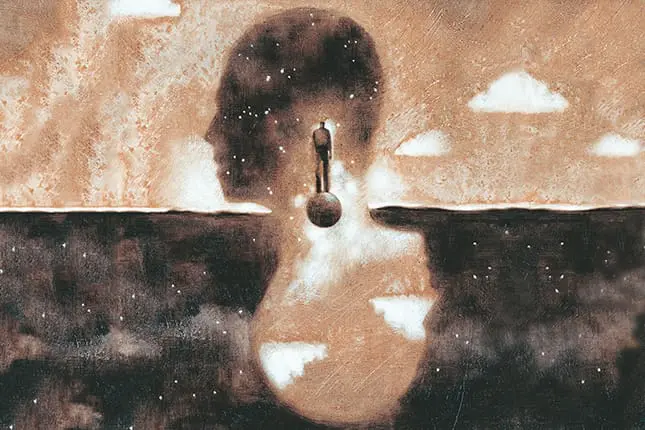Picture this: At the tender age of 71, six years before this writing, your author arrives back in Vancouver from a speaking jaunt in Philadelphia. The talk was successful, the audience enthusiastic, my message about addiction and trauma’s impact on people’s lives warmly received. I’ve traveled in unexpected comfort, having been upgraded to the business-class cabin. Descending over Vancouver’s pristine sea-to-sky panorama, I’m a regular Little Jack Horner in my corner of the plane, suffused with a “What a good boy am I” glow. As we touch down and begin to taxi to the gate, the text from my wife, Rae, lights up the tiny screen: “Sorry. I haven’t left home yet. Do you still want me to come?” I stiffen, satisfaction displaced by rage. “Never mind,” I dictate tersely into the phone. Embittered, I disembark, clear customs, and take a taxi home, all of a 20-minute ride door-to-door. (I trust the reader is already gripping the pages in empathetic outrage at the indignity suffered by your author.) Seeing Rae, I growl a hello that is more accusation than greeting, and scarcely look at her. In fact, I barely make eye contact for the next 24 hours. When addressed, I utter little more than brief, monotone grunts. My gaze is averted, the upper part of my face tense and rigid, and my jaw in a perma-clench.
What is happening with me? Is this the response of a mature adult in his eighth decade? Only superficially. At times like this, there is very little grown-up Gabor in the mix. Most of me is in the grips of the distant past, near the beginnings of my life. This kind of physio-emotional time warp, preventing me from inhabiting the present moment, is one of the imprints of trauma, an underlying theme for many people in this culture. In fact, it’s so deeply “underlying” that many of us don’t know it’s there.
The meaning of the word trauma, in its Greek origin, is wound. Whether we realize it or not, it’s our woundedness, or how we cope with it, that dictates much of our behavior, shapes our social habits, and informs our way of thinking about the world. It can even determine whether or not we are capable of rational thought at all in matters of the greatest importance to our lives. For many of us, it rears its head in our closest partnerships, causing all kinds of relational mischief.
It was in 1889 that the pioneering French psychologist Pierre Janet first depicted traumatic memory as being held in “automatic actions and reactions, sensations and attitudes . . . replayed and reenacted in visceral sensations.” In the present century, the leading trauma psychologist Peter Levine has written that certain shocks to the organism “can alter a person’s biological, psychological, and social equilibrium to such a degree that the memory of one particular event comes to taint, and dominate, all other experiences, spoiling an appreciation of the present moment.” Levine calls this “the tyranny of the past.”
In my case, the template for my hostility to Rae’s message is to be found in the diary my mother kept, in a nearly illegible scrawl and only intermittently, during my first years in wartime and post-World War II Budapest. The following, translated by me from the Hungarian, is her entry on April 8, 1945, when I was 14 months old:
My dear little man, only after many long months do I take in hand again the pen, so that I may briefly sketch for you the unspeakable horrors of those times, the details of which I do not wish you to know… It was on December 12 that the Crossed-Arrows forced us into the fenced-in Budapest ghetto, from which, with extreme difficulty, we found refuge in a Swiss-protected house. From there, after two days, I sent you by a complete stranger to your Aunt Viola’s because I saw that your little organism could not possibly endure the living conditions in that building. Now began the most dreadful five or six weeks of my life, when I couldn’t see you.
I survived, thanks to the kindness and courage of the unknown Christian woman to whom my mother entrusted me in the street and who conveyed me to relatives living in hiding under relatively safer circumstances. Reunited with my mother after the Soviet army had put the Germans to flight, I did not so much as look at her for several days.
The great 20th-century British psychiatrist and psychologist John Bowlby was familiar with such behavior: he called it detachment. At his clinic, he observed 10 small children who had to endure prolonged separation from their parents due to uncontrollable circumstances. “On meeting mother for the first time after days or weeks away every one of the children showed some degree of detachment,” Bowlby observed. “Two seemed not to recognize mother. The other eight turned away or even walked away from her. Most of them either cried or came close to tears; a number alternated between a tearful and expressionless face.” It may seem counterintuitive, but this reflexive rejection of the loving mother is an adaptation: “I was so hurt when you abandoned me,” says the young child’s mind, “that I will not reconnect with you. I don’t dare open myself to that pain again.”
In many children—and I was certainly one—early reactions like these become embedded in the nervous system, mind, and body, playing havoc with future relationships. They show up throughout the lifetime in response to any incident even vaguely resembling the original imprint—often without any recall of the inciting circumstances. My petulant and defensive reaction to Rae signaled that old, deep-brain emotional circuits, programmed in infancy, had taken over while the rational, calming, self-regulating parts of my brain went offline.
To her credit, my wife will not allow me to get away with pinning the entire blame for my arrivals-gate hissy fit on Nazis and fascists and infant trauma. Yes, the backstory merits compassion and understanding—and she has given me an abundance of both—but there comes a point when “Hitler made me do it” won’t fly. Responsibility can and must be taken. After 24 hours of the silent treatment, Rae had had enough. “Oh, knock it off already,” she said. And so I did—a measure of progress and relative maturation on my part. In times past, it would have taken me days or longer to “knock it off”: to drop my resentment, and for my core to unfreeze, my face to relax, my voice to soften, and my head to turn willingly and with love toward my life partner.
“My problem is that I am married to someone who understands me,” I have often grumbled, only partly in jest. Really, of course, my great blessing is to be married to someone with healthy boundaries, who sees me as I am now and who will no longer bear the brunt of my prolonged and unplanned visits to the distant past.
What Trauma Is and What It Does
Trauma’s imprint is more endemic than we realize. That may seem a puzzling statement, as trauma has become something of a catchword in our society. To boot, the word has taken on a number of colloquial valences that confuse and dilute its meaning.
The usual conception of trauma conjures up notions of catastrophic events: hurricanes, abuse, egregious neglect, and war. This has the unintended and misleading effect of relegating trauma to the realm of the abnormal, the unusual, the exceptional. If there exists a class of people we call “traumatized,” that must mean that most of us are not. Here we miss the mark by a wide margin. Trauma pervades our culture, from personal functioning through social relationships, parenting, education, popular culture, economics, and politics. In fact, someone without the marks of trauma would be an outlier in our society. We’re closer to the truth when we ask: Where do we each fit on the broad and surprisingly inclusive trauma spectrum? Which of its many marks has each of us carried all (or most) of our lives, and what have the impacts been? And what possibilities would open up were we to become more familiar, even intimate, with them?
As I use the word, trauma is an inner injury, a lasting rupture or split within the self due to difficult or hurtful events. By this definition, trauma is primarily what happens within someone as a result of the difficult or hurtful events that befall them; it is not the events themselves. “Trauma is not what happens to you but what happens inside you” is how I formulate it. Think of a car accident where someone sustains a concussion: the accident is what happened; the injury is what lasts. Likewise, trauma is a psychic injury, lodged in our nervous system, mind, and body, lasting long past the originating incident(s), triggerable at any moment. It is a constellation of hardships, composed of the wound itself and the residual burdens that our woundedness imposes on our bodies and souls: the unresolved emotions they visit upon us; the coping dynamics they dictate; the tragic or melodramatic or neurotic scripts we unwittingly but inexorably live out; and, not least, the toll these take on our bodies.
When a wound doesn’t mend on its own, one of two things will happen: it can either remain raw or, more commonly, be replaced by a thick layer of scar tissue. As an open sore, it’s an ongoing source of pain and a place where we can be hurt over and over again by even the slightest stimulus. It compels us to be ever vigilant—always nursing our wounds, as it were—and leaves us limited in our capacity to move flexibly and act confidently lest we be harmed again. The scar is preferable, providing protection and holding tissues together, but it has its drawbacks: it is tight, hard, inflexible, unable to grow, a zone of numbness.
Raw wound or scar, unresolved trauma is a constriction of the self, both physical and psychological. By impelling us to suppress hurt and unwanted parts of the psyche, it fragments the self. Until seen and acknowledged, it is also a barrier to growth. In many cases, as in mine, it blights a person’s sense of worth, poisons relationships, and undermines appreciation for life itself. Taken together, these impacts constitute a major and foundational impediment to flourishing for many, many people. To quote Peter Levine once more, “Trauma is perhaps the most ignored, belittled, denied, misunderstood, and untreated cause of human suffering.”
From The Myth of Normal by Dr. Gabor Maté, published by Avery, an imprint of Penguin Publishing Group, a division of Penguin Random House, LLC. Copyright © 2022 by Gabor Maté.
ILLUSTRATION © ILLUSTRATION SOURCE/PAUL ANDERSON
Gabor Maté
Gabor Maté, MD, a family practitioner for over three decades, is the author of four bestselling books, including “When the Body Says No: Exploring the Stress-Disease Connection,” “In the Realm of Hungry Ghosts: Close Encounters with Addiction,” and “The Myth of Normal: Illness and Health in an Insane Culture.”














